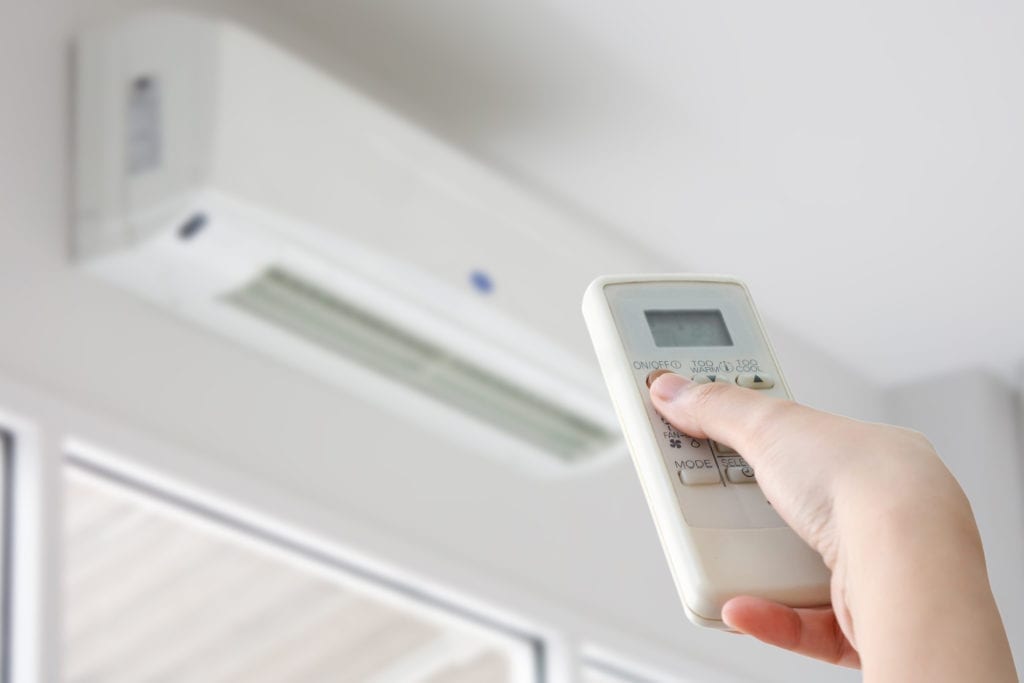
Top 10 HVAC Maintenance Tips to Save You Money in the Long Run
Keeping your HVAC system in prime condition isn’t just about ensuring a comfortable indoor environment—it’s also about optimizing efficiency and avoiding unnecessary repair costs. Proper maintenance can extend the lifespan of your HVAC unit, reduce energy bills, and even improve air quality in your home. Here are some crucial maintenance tips that can save you money in the long run:
COMPARE QUOTES1. Regular Filter Changes:
Your HVAC filters trap dust, pollen, pet dander, and other airborne particles. Over time, these filters can become clogged, causing the system to work harder and consume more energy. A simple yet effective way to boost efficiency is to replace or clean filters every 1-3 months, depending on usage.
A filter change is perhaps the simplest yet most impactful maintenance task for an HVAC system. But with a range of filter types available and the various factors affecting their lifespan, understanding when and how to change them can be daunting. Let’s break it down.
Different Types of HVAC Filters:
- Fiberglass Filters: These are the most basic type of filters and are often the most affordable. They’re designed to catch large dust particles. However, their MERV rating (Minimum Efficiency Reporting Value) is low, meaning they aren’t as effective at filtering out smaller particles.
- Pleated Filters: Made from polyester or cotton folds, these filters have a higher MERV rating than fiberglass filters. They’re adept at trapping smaller particles like pollen and pet dander, making them ideal for homes with allergy sufferers.
- Activated Carbon Filters: These filters are known for odor removal. The activated carbon neutralizes smells, ensuring your indoor air remains fresh. They’re particularly beneficial for homes with smokers or pets.
- HEPA Filters: Standing for High-Efficiency Particulate Air, HEPA filters can trap at least 99.97% of particles 0.3 microns in diameter (like tobacco smoke). They’re used in settings where air cleanliness is paramount, such as hospitals.
- Washable Filters: While these can be cleaned and reused, they’re not always the most efficient. Over time, their ability to trap particles can diminish. Plus, if they’re not thoroughly dried after cleaning, they can become a source of mold.

Identifying When Your Filter Needs Changing:
- Visual Inspection: Over time, the filter will gather particles, and this buildup will be visible. If it looks clogged or excessively dirty, it’s time for a change.
- Reduced Airflow: A clogged filter can reduce airflow in the system. If you notice that the air isn’t coming out of your vents with the same force as it used to, it might be due to a dirty filter.
- Increased Allergy Symptoms: If people in your home begin to experience heightened allergy symptoms, it might be because your HVAC filter isn’t effectively trapping allergens.
- Unusual System Sounds: Sometimes, when a filter is excessively dirty, the HVAC system has to work harder, leading to strange noises.
- Higher Energy Bills: A dirty filter can force your HVAC system to overwork, leading to increased energy consumption and, consequently, higher utility bills.
As a general guideline, it’s recommended to check your HVAC filter every month. Depending on the type of filter and the conditions of your home (like if you have pets or smokers), you might need to replace it monthly, bi-monthly, or quarterly. Always consult the filter manufacturer’s recommendations and consider the specific needs of your household when determining a replacement schedule.
COMPARE QUOTES2. Seasonal Inspections:
Before the onset of the peak seasons—summer and winter—it’s wise to get your HVAC system inspected by professionals. They can catch potential issues early on, preventing minor problems from escalating into costly repairs.
3. Clean the Outdoor Unit:
Over time, the outdoor component of your HVAC system can accumulate leaves, twigs, and other debris. This can restrict airflow and reduce efficiency. Periodically, ensure the area around the outdoor unit is clear and clean the coils and surfaces.
4. Seal Ducts and Openings:
Leaky ducts can result in significant energy loss. Sealing and insulating these ducts can improve the efficiency of your system by up to 20%. Also, check for drafts around windows and doors and seal them to prevent warm or cool air from escaping.
Ducts are an integral part of an HVAC system, responsible for distributing conditioned air throughout a home or building. However, if there are leaks, holes, or poor connections in these ducts, you can lose a significant amount of conditioned air, which can lead to substantial energy wastage and higher energy bills.

How Leaky Ducts Impact Energy Efficiency:
- Loss of Conditioned Air: Leaky ducts can lose as much as 20-30% of the conditioned air that moves through them due to holes and disconnections. This means that your HVAC system has to work harder and longer to bring your space to the desired temperature, consuming more energy in the process.
- Imbalance in Room Temperatures: Rooms that are farther from the HVAC unit might not receive adequate conditioned air due to leaks in the ductwork. This can lead to uneven temperatures, making certain rooms too hot or too cold. As a result, homeowners often adjust the thermostat, causing the system to run longer and increasing energy usage.
- Increased Strain on the HVAC System: When conditioned air escapes through leaky ducts, the HVAC system compensates by working harder. This not only uses more energy but can also shorten the lifespan of the system.
- Decreased Air Quality: Leaks in return ducts can pull pollutants into the HVAC system. These pollutants can then circulate throughout the home, leading to potential health concerns and forcing the HVAC system to work harder to maintain indoor air quality.
According to the U.S. Department of Energy, “In typical houses, about 20% to 30% of the air that moves through the duct system is lost due to leaks, holes, and poorly connected ducts.” This can lead to a significant increase in monthly energy bills. Ensuring that ducts are well-sealed and insulated can make homes much more energy-efficient, leading to savings on heating and cooling costs.
For more in-depth information on the subject, you can refer to the article from the U.S. Department of Energy. By addressing the issue of leaky ducts, homeowners can enjoy a more comfortable living environment, enhanced indoor air quality, and substantial savings on energy bills.
COMPARE QUOTES5. Install a Programmable Thermostat:
A programmable thermostat allows you to set temperatures based on your schedule. This means the HVAC system won’t be working hard when no one is home, reducing energy consumption.
Benefits of Programmable Thermostats:
- Automated Temperature Control: Unlike traditional thermostats that require manual adjustments, programmable thermostats can be set to automatically adjust the temperature based on your preferred settings, ensuring a comfortable environment without the constant need for manual tweaks.
- Energy Savings: By allowing homeowners to set the temperature based on when they are at home, away, or asleep, programmable thermostats can significantly reduce energy usage. There’s no need to keep the temperature constantly low or high when no one’s home.
- Consistency in Temperature: Maintaining a consistent temperature means your HVAC system doesn’t have to work as hard. This can lead to longer system lifespans and reduced wear and tear.
- Remote Access: Many modern programmable thermostats come equipped with Wi-Fi capabilities, allowing homeowners to adjust settings remotely from a smartphone or computer. This is especially handy if you forget to adjust the thermostat before leaving on a trip or if there’s a sudden change in weather.

Setting an Ideal Schedule:
- Wake Time: Set the thermostat to your desired temperature for when you’re up in the morning. If you prefer a cooler or warmer start to your day, adjust it accordingly.
- Leave Time: When you’re away from home, be it for work or other reasons, set the thermostat to a higher temperature in summer and a lower temperature in winter. There’s no need to maintain an optimal temperature when the house is empty.
- Return Time: Just before you typically get back home, adjust the thermostat to reach your preferred temperature, ensuring a comfortable environment when you step in.
- Sleep Time: As you wind down for the night, adjust the thermostat to a slightly cooler or warmer setting, depending on the season. Since you’ll be under blankets, you might find you don’t need as much heating or cooling during this time.
By effectively utilizing a programmable thermostat, homeowners can strike a balance between maintaining a comfortable living environment and ensuring efficient energy usage. This balance ultimately contributes to decreased energy bills and a reduced carbon footprint, making programmable thermostats a wise investment for both your pocket and the planet.
COMPARE QUOTES6. Ensure Proper Insulation:
An adequately insulated home retains heat during winter and stays cool during summer, reducing the load on your HVAC system. Check attic insulation and consider upgrading if it’s below recommended levels.
7. Check Refrigerant Levels:
For cooling systems, it’s essential to have the correct amount of refrigerant. Too much or too little can decrease the efficiency of your HVAC system, leading to higher energy bills.
8. Regularly Clean and Check Vents:
Ensure all vents and registers are free from obstructions. Furniture, curtains, or toys can block these outlets and reduce system efficiency. It’s also a good idea to vacuum these vents periodically to keep them clean. Like any other piece of machinery, your HVAC system gathers dust, debris, and allergens as time progresses. This accumulation not only hinders the unit from operating at peak efficiency but also potentially reduces its longevity and can be a source of health concerns.

Obstruction and Airflow: Signs Your HVAC Needs Cleaning
When an HVAC system has reduced airflow, one primary cause could be dirt and debris obstructing the ducts or specific system components. This isn’t just about efficiency; it’s also about the quality of air being circulated in the house. A dusty environment is usually a clear sign that the HVAC system is recirculating the accumulated dust.
In some cases, the evidence of a dirty HVAC system is more audible than visible. Rattling, humming, or buzzing could indicate debris interfering with its functions. A musty or even a burnt smell can arise when mold, mildew, or large amounts of dust are present. Furthermore, if household members start showing an uptick in allergies, respiratory issues, or other health symptoms, it might be the HVAC spreading contaminants.
COMPARE QUOTESSimple Steps to Keep Your HVAC Clean
First and foremost, the filters. An easily actionable step is checking these filters monthly. They act as the first line of defense, trapping most of the airborne particles. Depending on the amount of dust or if pets are in the house, these filters might need replacing every three months, or even sooner if they appear overly dirty.
The external unit, usually situated outside the home, is another component requiring regular attention. Over time, it can get obstructed by nature’s elements like leaves or twigs. A routine check to keep it clear and an occasional gentle hose down can do wonders.
Considering a Professional Clean-Up
For the internal labyrinth that is the ductwork of a home, a more thorough approach is necessary. These ducts can become a haven for dust, pet hair, and other particulates. Especially if you’ve noticed considerable build-up or if there’s been recent home renovation, it might be time to call in professionals for a comprehensive clean-up.
Lastly, an annual check-up by an HVAC professional is always recommended. This not only gives them an opportunity to clean intricate components like the evaporator and condenser coils but also to preemptively spot and rectify potential problems. By ensuring your HVAC system remains clean, you’re not just preserving a machine. You’re ensuring a healthier living space, optimizing energy consumption, and potentially staving off more substantial repair or replacement expenses.

9. Lubricate Moving Parts:
Friction in motors can increase the amount of electricity you use. Regularly lubricating the moving parts of your HVAC system can save you money on your energy bills and extend the life of your unit.
10. Upgrade When Necessary:
If your HVAC system is over 15 years old, it might be more cost-effective in the long run to invest in a newer, more efficient model. Technology has come a long way, and current HVAC systems operate with much higher efficiency than older models.
While some of these maintenance tasks might seem minor, when combined, they can significantly impact the efficiency of your HVAC system. Regular maintenance ensures you’re not only keeping your living or working environment comfortable but also optimizing for long-term savings. Remember, a well-maintained HVAC system doesn’t just save money—it also contributes to a healthier, more comfortable indoor environment.
COMPARE QUOTESThe Price of Neglect: Costs of Common HVAC Problems
It’s an age-old adage that prevention is better than cure, and it stands particularly true for HVAC systems. While maintenance might seem like an additional expense, in the long run, it can actually save you significant money and stress. Let’s delve into the potential costs you could face if common HVAC issues go unaddressed.
Refrigerant Leaks
If your HVAC system’s refrigerant starts leaking, not only does it affect the efficiency of the unit, but it can also pose environmental hazards. Fixing this involves pinpointing the leak, repairing it, and then refilling the refrigerant. The cost, depending on the extent of the leak and the type of refrigerant your system uses, can range from $200 to $1,500.
Fan Failures
Your HVAC system consists of two primary fans: the blower fan (inside) and the condenser fan (outside). Issues with these can arise due to dirt accumulation, faulty motors, or worn belts. If neglected, a fan problem can escalate, leading to total system failure. Repairs can range between $100 for minor issues to upwards of $700 for motor replacements.
Malfunctioning Thermostats
A non-responsive or inaccurate thermostat can make your living space uncomfortable and drive up energy bills. Replacing or repairing a thermostat, while relatively less expensive than other HVAC issues, can cost between $50 to $500, depending on the type and brand of the thermostat.

Dirty or Clogged Coils
If the evaporator coils get dirty or the condenser coils become clogged, your HVAC has to work overtime, shortening its lifespan and reducing its efficiency. Cleaning the coils might cost between $100 to $400, but if they get severely damaged and need replacement, you’re looking at an expense of $600 to $2,000.
Complete System Failure
This is the worst-case scenario. If smaller issues aren’t addressed in time, they can lead to the entire system shutting down. Replacing an HVAC system can cost anywhere from $4,000 to $12,000, depending on the size and type of unit you choose.
COMPARE QUOTESNeglecting routine maintenance of your HVAC system can lead to a series of complications, each with its associated costs. While these are ballpark figures and actual costs can vary based on regional labor rates, system specifics, and the severity of the issue, they underscore the importance of proactive system care. Investing in regular maintenance is not just about ensuring comfort but also about making financially prudent decisions for the long haul.

Seasonal Maintenance: The Key to Efficiency
One of the most overlooked aspects of HVAC upkeep is seasonal maintenance. Every change in season brings about a different set of challenges for your HVAC system.
Pre-Summer Checks
Before the heatwaves hit, it’s crucial to ensure your cooling system is up to the task. The coolant level and condenser efficiency are paramount. Neglecting this can not only lead to insufficient cooling but also escalate your power bills as the system struggles to maintain desired temperatures. It’s advisable to get a complete system check, which might cost around $70-$150, but this can prevent more significant, more expensive issues down the line.
Pre-Winter Maintenance
Similarly, as the cold months approach, checking your heating system becomes imperative. Ensure that the heating elements, be it furnaces or heat pumps, are working efficiently. A general inspection, which includes cleaning, checking for drafts, and ensuring efficient thermostat operation, can range from $80-$150.
Periodic Air Duct Cleaning
Your air ducts are the lungs of your HVAC system. Over time, they accumulate dust, pollen, and sometimes even mold. Cleaning them ensures better air quality and efficient operation. On average, duct cleaning can cost between $300 and $500. However, the enhanced air quality and reduced load on the HVAC system make this investment worthwhile.
Invest in Energy-Efficient Upgrades
If your HVAC system is aged, it might be worth considering energy-efficient upgrades. Modern systems are designed to operate efficiently, using less energy while providing optimal climate control. While the upfront cost might be higher, ranging from $3,000 to $7,000 for a full upgrade, the monthly savings in power bills and the prolonged lifespan of the system often justify the investment.
Maintaining an HVAC system is much like taking care of a vehicle. Regular checks, timely interventions, and understanding its operational nuances can lead to optimal performance and longevity. While there are costs associated with maintenance, they pale in comparison to the hefty bills and inconveniences of major breakdowns. So, remember to schedule your next HVAC maintenance check, and enjoy peace of mind knowing you’re saving money in the long run.
COMPARE QUOTES
Leave a Reply